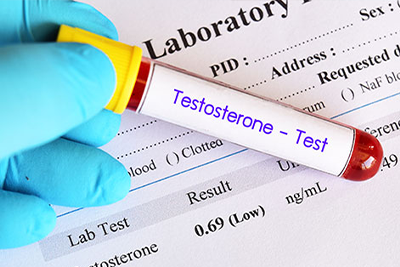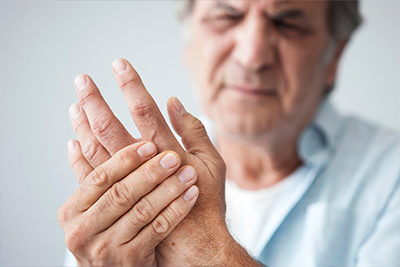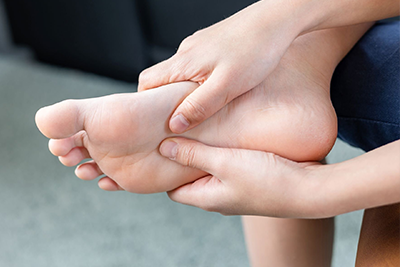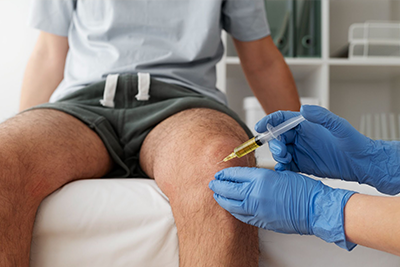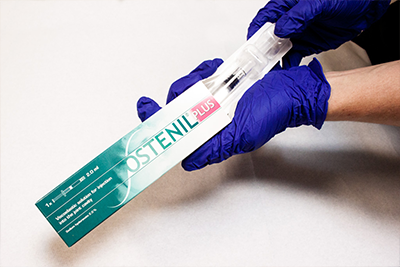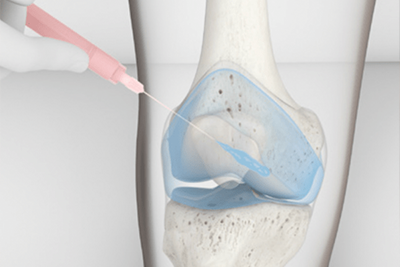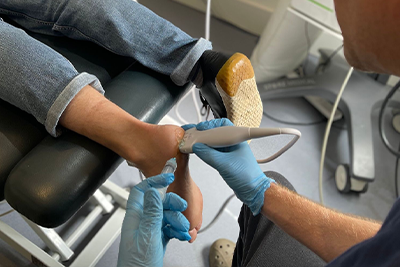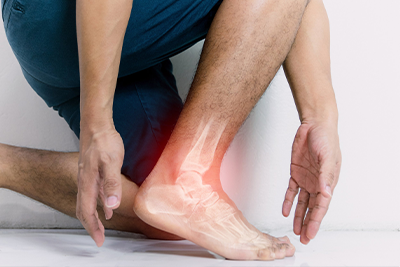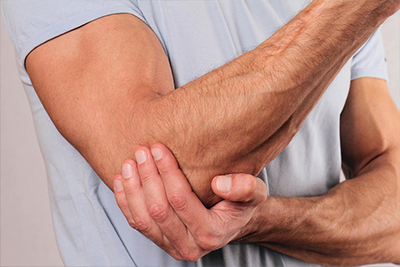Carpal Tunnel Syndrome (CTS) is a medical condition that arises when the median nerve, which runs from your forearm into the palm of your hand, becomes compressed or squeezed at the wrist. This nerve passes through the carpal tunnel, a narrow passageway of ligament and bones at the base of the hand. When the median nerve is compressed, it can lead to symptoms such as numbness, tingling, weakness, and pain in the hand and wrist.
Addressing CTS promptly is crucial as it can significantly impact daily life and work. Untreated CTS can lead to chronic pain and permanent nerve damage, affecting your ability to perform routine tasks such as typing, gripping objects, and even holding a phone. The condition can also disrupt sleep due to night time symptoms and may decrease productivity and quality of life. Early intervention can prevent these complications and improve outcomes.
At Vale Health Clinic, we are dedicated to providing comprehensive care for individuals suffering from Carpal Tunnel Syndrome. Our experienced specialists employ the latest diagnostic and treatment techniques to ensure our patients receive the best possible care. We understand the challenges CTS can pose and are committed to helping you regain full functionality and relief from pain. With a multidisciplinary approach and state-of-the-art facilities, Vale Health Clinic is your partner in overcoming CTS and improving your overall hand health.
Carpal Tunnel Syndrome
The carpal tunnel is a narrow, rigid passageway on the palm side of your wrist. It comprises bones and ligaments, creating a tunnel-like structure through which several tendons and the median nerve pass. The median nerve provides sensation to the thumb, index finger, middle finger, and part of the ring finger. It also controls the muscles at the base of the thumb. The primary function of the carpal tunnel is to protect the median nerve and the tendons that bend the fingers, ensuring smooth and pain-free hand movements.
Carpal Tunnel Syndrome occurs when the median nerve is compressed within the carpal tunnel. Several factors can contribute to this compression, including:
Repetitive Hand Use:
Activities that involve prolonged or repetitive use of the hands and wrists, such as typing, sewing, or assembly line work, can lead to swelling and compression of the median nerve.
Medical Conditions:
Certain health conditions, like diabetes, rheumatoid arthritis, thyroid gland imbalances, and fluid retention during pregnancy or menopause, can increase the risk of developing CTS.
Injuries:
Wrist fractures, sprains, or any trauma that causes swelling in the wrist area can narrow the carpal tunnel and compress the median nerve.
Genetic Factors:
Some people may be born with a smaller carpal tunnel, predisposing them to CTS.
Workplace Factors:
Jobs involving vibrating tools or requiring forceful wrist movements can also increase the risk.
Recognising the symptoms of Carpal Tunnel Syndrome early can help seek timely treatment and prevent further complications. Typical symptoms include:
Numbness and Tingling:
Often felt in the thumb, index, middle, and ring fingers. These sensations may occur while holding a steering wheel, phone, or newspaper and may wake you from sleep.
Pain:
Pain in the wrist or hand that may radiate up the arm. This pain can be intermittent or constant, depending on the severity of the condition.
Weakness:
A tendency to drop objects due to weakness in the thumb and fingers. This occurs because the muscles controlled by the median nerve may weaken over time.
Swelling Sensation:
Some people report feeling swollen in their fingers, even when no swelling is present.
Diagnosis of Carpal Tunnel Syndrome
Carpal Tunnel Syndrome (CTS) diagnosis begins with an initial consultation where the healthcare provider gathers a detailed patient history. This involves discussing your symptoms, duration, and activities that may exacerbate them. The doctor will inquire about your occupation, hobbies, and daily activities to identify any repetitive hand movements that might contribute to CTS. Additionally, they will review your medical history to identify any underlying conditions, such as diabetes or rheumatoid arthritis, which can increase the risk of CTS. This comprehensive history helps to establish a context for your symptoms and guides further diagnostic steps.
During the physical examination, the healthcare provider will perform specific tests to assess the function of the median nerve and the presence of any physical signs of CTS. Two common tests include:
Tinel’s Sign:
In this test, the doctor taps the median nerve at the wrist. A positive Tinel’s sign occurs if tapping the nerve produces tingling or a shock-like sensation in the fingers, indicating irritation of the median nerve.
Phalen’s Maneuver:
For this test, you will be asked to hold your forearms upright and press the backs of your hands together, forming a right angle at the wrists. Holding this position for about a minute may produce symptoms such as tingling or numbness in the fingers, indicating compression of the median nerve within the carpal tunnel.
These physical examination techniques are valuable in diagnosing CTS and determining the severity of nerve compression.
To confirm the diagnosis of Carpal Tunnel Syndrome and assess the extent of nerve damage, the healthcare provider may recommend the following diagnostic tests:
Nerve Conduction Studies (NCS):
This test measures the speed of electrical impulses travelling along the median nerve and the muscles in your hand. Slower transmission rates can indicate nerve compression in the carpal tunnel. Electrodes are placed on the hand and wrist, and small electrical impulses are sent through the median nerve. The results can show the degree of blockage or slowing of nerve signals.
Electromyography (EMG):
EMG assesses muscles’ electrical activity at rest and during contraction. A thin needle electrode is inserted into specific muscles to record electrical activity. This test helps to determine if muscle damage is due to median nerve dysfunction and to rule out other conditions that might mimic CTS.
Non-Surgical Treatment Options
Making certain lifestyle changes and ergonomic adjustments can significantly reduce strain on your wrists and alleviate the symptoms of Carpal Tunnel Syndrome (CTS). Here are some recommendations:
- Avoid repetitive wrist motions and take frequent breaks from activities that strain your wrists. Alternate tasks to reduce the constant pressure on your hands and wrists.
- Ensure your workstation is ergonomically optimised. Use a keyboard and mouse that promote a neutral wrist position. Adjust your chair and desk height to keep your wrists straight while typing.
- Avoid bending your wrists up or down. Keep them in a neutral, straight position as much as possible.
Splinting or bracing the wrist can be an effective way to manage CTS symptoms, especially during the night. Here’s how splints can help and when to use them:
- Wrist splints keep the wrist neutral, minimising pressure on the median nerve. This helps to reduce pain and numbness, particularly at night when symptoms can worsen.
- Splints are often worn during sleep to prevent wrist movements that could exacerbate symptoms. They can also be used during activities that involve repetitive wrist motions.
Physical therapy and specific exercises can help improve the function of the wrist and reduce CTS symptoms. Here are some beneficial exercises:
Nerve Gliding Exercises:
These exercises help the median nerve move more freely within the carpal tunnel. One example is the “tendon gliding” exercise, which involves moving the fingers through different positions to stretch the tendons.
Stretching Exercises:
Wrist flexor and extensor stretches can help maintain flexibility and reduce stiffness. Gently bend your wrist forward and backward and hold each position for 15-30 seconds.
Strengthening Exercises:
Strengthening the muscles around the wrist can provide better support. Squeezing a soft rubber ball or using a hand gripper can help build strength.
Medications can alleviate the symptoms of CTS by reducing inflammation and pain. Common medications include:
Nonsteroidal Anti-Inflammatory Drugs (NSAIDs):
Medications such as ibuprofen and naproxen can help relieve pain and reduce inflammation around the median nerve.
Corticosteroids:
Corticosteroid injections directly into the carpal tunnel can significantly relieve swelling and pressure on the median nerve. Oral corticosteroids may also be prescribed, though they are generally less effective than injections.
Surgical Treatment Options
Surgery for Carpal Tunnel Syndrome (CTS) is considered when non-surgical treatments fail to provide relief or when symptoms are severe and significantly impact daily activities. Indications for surgery include:
Persistent Symptoms:
Severe pain, numbness, or tingling that does not improve with non-surgical treatments.
Muscle Weakness:
Loss of strength or dexterity in the hand and fingers, especially if it leads to dropping objects.
Nerve Damage:
Diagnostic tests, such as electromyography (EMG) or nerve conduction studies (NCS), show evidence of median nerve damage.
Long-Term Symptoms:
Symptoms lasting for more than six months despite conservative treatment.
Two primary surgical procedures are used to treat CTS: endoscopic surgery and open-release surgery. Both aim to relieve pressure on the median nerve by cutting the transverse carpal ligament.
Endoscopic Surgery:
- A small incision is made in the wrist or palm, and an endoscope (a tiny camera) is inserted to guide the surgeon. The transverse carpal ligament is then cut using special instruments.
- Minimally invasive, smaller incisions, potentially quicker recovery time.
- Slightly higher risk of nerve injury due to limited visibility requires specialised equipment and expertise.
Open Release Surgery:
- A larger incision is made in the palm to visualise and directly cut the transverse carpal ligament.
- Better visibility for the surgeon, straightforward procedure.
- Larger incision, longer recovery time, more postoperative discomfort.
Both procedures are generally effective, and the choice depends on the surgeon’s expertise and the patient’s specific condition.
Post-Treatment and Rehabilitation
Recovery from Carpal Tunnel Syndrome (CTS) surgery involves several phases, each with specific milestones. Understanding these phases can help set realistic expectations and ensure a smooth recovery.
- Immediate Post-Surgery (First Few Days):
Rest and Immobilization:
Your hand will be bandaged, and you may have a splint to keep your wrist immobile. Keeping your hand elevated can help reduce swelling.
Pain Management:
You will be prescribed pain medications to manage discomfort. Ice packs can also help reduce pain and swelling.
- Early Recovery (First 2 Weeks):
Wound Care:
Keep the surgical site clean and dry. Follow your surgeon’s instructions for bandage changes and suture care.
Activity Restrictions:
Avoid heavy lifting, repetitive hand movements, and activities that strain your wrist. Light hand use is encouraged to prevent stiffness.
- Intermediate Recovery (2-6 Weeks):
Splint Removal:
Depending on your surgeon’s advice, your splint may be removed after the first few weeks.
Increasing Activity:
Gradually increase hand and wrist activities. Follow any specific guidelines provided by your healthcare provider.
- Late Recovery (6 Weeks and Beyond):
Physical Therapy:
You may begin more intensive physical therapy to restore strength and flexibility in your hand and wrist.
Full Recovery:
Most patients achieve significant symptom relief within a few weeks, but full recovery can take several months.
Physical Therapy and Rehabilitation Exercises
Physical therapy is crucial for regaining strength and flexibility after CTS surgery. Here are some exercises that can aid in your rehabilitation:
- Wrist Flexor Stretch:
Extend your arm with the palm facing up. Use your other hand to gently pull your fingers back towards your body until you feel a stretch in your wrist and forearm. Hold for 15-30 seconds and repeat several times.
- Wrist Extensor Stretch:
Extend your arm with the palm facing down. Use your other hand to gently pull your fingers back towards your body until you feel a stretch in the top of your wrist and forearm. Hold for 15-30 seconds and repeat several times.
- Tendon Gliding Exercises:
Start with your fingers straight. Bend your fingers at the knuckles to make a hook fist, a full fist, and a straight fist. Repeat each position 5-10 times to maintain tendon flexibility.
- Grip Strengthening:
Squeeze a soft ball (stress ball) or use a hand gripper to build strength in your hand and fingers. Perform this exercise 10-15 times, gradually increasing the resistance.
Preventing Recurrence
Preventing the recurrence of CTS involves maintaining good wrist health and making ergonomic adjustments. Here are some tips:
Ergonomic Workstations:
Ensure your workstation is ergonomic to reduce strain on your wrists. Use a keyboard and mouse that keep your wrists in a neutral position.
Frequent Breaks:
Take regular breaks from repetitive hand activities. Stretch and move your wrists and hands frequently to prevent stiffness.
Proper Hand Position:
Avoid bending your wrists up or down for prolonged periods. Keep them in a straight, neutral position as much as possible.
Strength and Flexibility:
Continue with strengthening and stretching exercises even after recovery to maintain wrist health.
Awareness of Symptoms:
Be vigilant for early signs of CTS recurrence, such as tingling or numbness. Seek medical advice promptly if symptoms reappear.
Why Choose Vale Health Clinic?
At Vale Health Clinic, we pride ourselves on having a highly qualified and experienced multidisciplinary team dedicated to providing the best care for Carpal Tunnel Syndrome (CTS).
Our vision is to provide specialist chiropractic care, treatment and prevention techniques to people suffering from acute and chronic pain in Tunbridge Wells and the surrounding villages. We provide you with a specially tailored plan that not only focuses on reducing the pain, immobility or discomfort you are experiencing but also considers the possible causes of your condition, i.e. your lifestyle, any genetic disorders, age and general health.
Vale Health Clinic is equipped with state-of-the-art diagnostic and treatment facilities to ensure accurate diagnosis and effective treatment of CTS. Our commitment to using the latest technology ensures that patients receive the most effective and up-to-date care available.
FAQs about Carpal Tunnel Syndrome
Q: What is Carpal Tunnel Syndrome?
Carpal Tunnel Syndrome (CTS) occurs when the median nerve, which runs from the forearm into the hand, becomes compressed at the wrist. This can lead to numbness, tingling, and pain in the hand and fingers.
Q: What are the leading causes of Carpal Tunnel Syndrome?
CTS can be caused by a variety of factors, including repetitive hand movements, wrist injuries, and medical conditions such as diabetes, rheumatoid arthritis, and hypothyroidism. It can also occur due to genetic predisposition; some individuals naturally have a smaller carpal tunnel.
Q: What are the symptoms of Carpal Tunnel Syndrome?
The primary symptoms include numbness, tingling, and pain in the thumb, index, middle, and ring fingers. Symptoms often worsen at night and can extend up the arm. Other symptoms may include weakness in the hand and a tendency to drop objects.
Q: How is Carpal Tunnel Syndrome diagnosed?
Diagnosis typically involves a physical examination and a medical history review. Specific tests, such as Tinel’s sign and Phalen’s manoeuvre, assess symptoms. Diagnostic tests such as nerve conduction studies (NCS) and electromyography (EMG) can confirm the diagnosis and evaluate the severity of the condition.
Q: Can Carpal Tunnel Syndrome be treated without surgery?
In many cases, CTS can be effectively managed through non-surgical treatments. These include lifestyle modifications, ergonomic adjustments, wrist splints, physical therapy, and medications such as NSAIDs or corticosteroids. Surgery is considered when these treatments fail to relieve symptoms.
Q: What does the surgery for Carpal Tunnel Syndrome involve?
Surgery for CTS involves cutting the transverse carpal ligament to relieve pressure on the median nerve. This can be done through open release surgery involving a larger incision or endoscopic surgery using a smaller incision and a camera to guide the procedure.
Q: How long does recovering from Carpal Tunnel Syndrome surgery take?
A: Recovery time varies depending on the individual and the type of surgery performed. Generally, patients can expect to return to normal activities within a few weeks to several months. Physical therapy and following post-surgical care instructions are essential for a successful recovery.
Q: Are there ways to prevent Carpal Tunnel Syndrome?
Preventive measures include maintaining good wrist and hand posture, taking regular breaks from repetitive tasks, performing hand and wrist exercises, and using ergonomic tools and equipment. Managing underlying medical conditions that may contribute to CTS is also important.
Q: When should I see a doctor about Carpal Tunnel Syndrome?
You should seek medical advice if you experience persistent numbness, tingling, or pain in your hand and fingers, especially if they interfere with daily activities or wake you at night. Early diagnosis and treatment can prevent the condition from worsening.
Related Articles
- How To Relieve Pain From a Trapped (Pinched) Nerve
- Chiropractor or Physiotherapist – Who Should I Use?
- Shoulder Exercises for Trapped Nerve
- Muscle Pain and Can Chiropractic Help
- Pudendal Neuralgia (Pelvis Nerve Pain) Symptoms & Treatment


